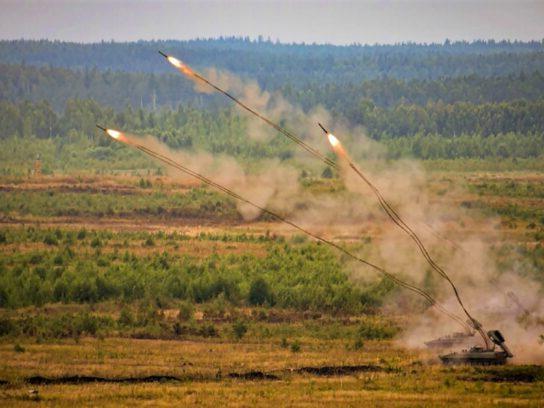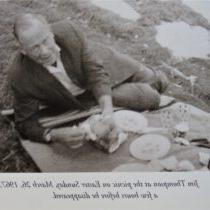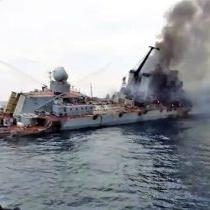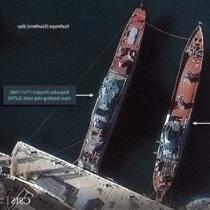
Tanks! Tanks! Tanks! F-16s! F-16s! F-16s! If you read the world’s press, you would think that numerous main battle tanks and F-16 jets, largely withheld by the U.S. and NATO from Ukraine, would be all that Ukraine needs to kick out the Russians.
Rubbish.
The truth is that a relative handful of obscure armored engineering vehicles (AEVs) that almost no-one has heard of are MUCH more crucial to Ukraine’s success on the battlefield. In fact, I would argue that these vehicles are so critical that without an adequate supply, and unless used in a smart, “combined arms” way, the war will be lost, and the resulting debacle could defeat Biden in 2024. Since Donald Trump would then almost certainly be President again, the results would likely be the death of U.S. democracy and the evisceration of the Earth’s environment.
Yes, the fate of the planet may well rest on a small group of men and machines that are “The Few” of this war, just like the few Royal Air Force Spitfire and Hurricane pilots who won the Battle of Britain.
The Russians have spent months building over 1200 miles of complex World War I-style defenses in eastern Ukraine. These defenses usually comprise: first, a thin line of personnel trenches for soldiers using small arms and anti-tank rockets; second, a line of concrete, pyramid-shaped anti-tank “dragon’s teeth”; third, one or more lines of anti-tank ditches; and fourth, a thick line of ditches and fortress bunkers protecting artillery, tanks and numerous men. Minefields are usually sown between the lines. Sometimes all four lines are doubled or even tripled.
The only way that the Ukrainians can achieve a “breach” in these massive obstacles is through their AEVs. Tanks and armored personnel carriers, no matter how numerous, will usually be stopped cold. Aircraft, even F-16s, are vulnerable to anti-aircraft missiles. Ukrainian artillery and missile fire can damage the Russian defenses but cannot open a complete clear path.
The AEVs that the Ukrainians have are apparently as follows:
- One British Armtrac 400 remote-controlled mine-clearing flail vehicle, not really designed for use in combat, provided by private crowd-sourced fundraising in the UK
- Two Croatian MV-4 and MV-10 remote-controlled mine clearing vehicles provided by the Howard Buffett Foundation
- Three NM189 Leopard 2 tank-based AEVs used for ditch-filling and mine clearance, donated by the government of Norway
- Six Leopard-2 tank-based AEVs equipped with anti-mine flails and bulldozer blades, provided by the Finnish government
- Eighteen Canadian government-supplied small de-mining tractor vehicles, not really designed for combat use
- Forty-two German FFG/Pearson mine clearing tanks with V-shaped dozer blades and skids; four German Dachs 2A1s ditch-filling AEVs using dozer blades and scoop buckets; and four Keiler mine clearing vehicles with plows, flails and rollers — all supplied by the government of Germany, but some apparently not yet arrived in Ukraine
- Sixteen Russian AEVs captured by the Ukrainians, including Listva mine-sensor/destroyers, and an unknown number of BMR 3M T90 main battle tanks equipped with anti-mine rollers and flails
- An unknown number of US-donated AEVs of unknown types, perhaps M9 armored bulldozers. According to Colonel Serhii Matveichuk of the Ukrainian Engineering Troops, the “best option for mine clearance would be M1150 vehicles based on the M1 Abrams tank, but Ukraine did not receive such assistance.” The M1150 is equipped with a mine plow and explosive line charges that can destroy up to 150 yards of mines.
- An unknown number of native Ukrainian AEVs, likely IMR-2 AEVs with dozer blades that can fill ditches at 375 cubic meters per hour and clear dragon’s teeth at 300 meters per hour; Dachs 2A1 ditch-fillers; BAT-2 plows; and UR-77 Meteorit line-firing mine clearance vehicles.
It is not possible to provide a firm estimate of how many AEVs the Ukrainians have, but I would guesstimate they have only about 50 to 120 or so combat-ready AEVs in total. (By contrast in a different war and situation, there were almost 600 aircraft flown by “The Few” in the Battle of Britain.)
All these different AEVs must be provided with different parts, training for the crews, and sometimes different fuels — a nightmare of supply chain administration.
Using these AEVs in breaching has been called “the most dangerous form of land warfare,” and must involve the highest and best use of “combined arms.” This involves nine phases: first, “shaping the battlefield” by destroying Russian command posts, troop concentrations and supply dumps behind the lines using artillery and missiles; second, identifying the weakest spots in the Russian lines; third, attacking while suppressing enemy fire via tank, infantry attack and artillery fire; fourth, obscuring the Ukrainian attackers with smoke or attacking at night; fifth, providing sufficient air cover and close air support; sixth, over-running the outer lines of infantry defense; seventh, clearing the dragons’ teeth obstacles and mine fields with AEVs protected by tanks and infantry; eighth, filling in the anti-tank ditches; and ninth, overcoming the last, thick line of bunkers and ditches.
These activities require tremendous coordination among the various type of troops, which comes only with repeated training. But many of the Ukrainian NCOs and junior officers trained by NATO and battle-hardened from 2014 to 2022 have been killed, wounded or cycled out. What remains are numerous inflexible ex-Soviet-doctrine soldiers, standing beside only about 48,000 newly-NATO-trained and not-very-combat-experienced men, organized in twelve new brigades.
It was apparently some of these old Soviet-doctrine-trained Ukrainian officers that planned and executed the first battle of the June counter-offensive, near Mala Tokmachka in Zaporizhzhia Oblast, which resulted in a defeat for the Ukrainians. An armored Ukrainian column attacked in daylight, with vehicles close together, no smoke cover, poor air defense and inadequate mine clearing AEVs. This Soviet-style attack resulted in the destruction of or damage to a vital IMR-2 AEV, a Leopard 2 main battle tank, and nine Bradley infantry fighting vehicles.
The future of Ukraine, Russia, NATO, Europe, the U.S. and perhaps the world hangs in the balance. AEVs could decide our fate.
Photos courtesy Lew Toulmin
- 1. Map showing the southern theater of the war, with the strategic Crimean peninsula at the bottom, the Sea of Azov on the right, and the Black Sea on the left. The likely main line of Ukrainian attack is from the north, south through Tokmak, to the south end of of the city of Melitopol, at an inlet of the Sea of Azov. Unfortunately this is the area most heavily fortified by the Russians. Each red circle indicates a Russian defensive feature.
- 2. Four types of Russian defenses, showing (upper left) standard white dragon’s teeth and an infantry trench, (lower left) coastal defenses in western Crimea; (upper right) an important crossroad; and (lower right) a canal defense near Crimea, with dragon’s teeth and trenches.
- 3. A Russian vehicle laying dragons’ teeth. Dragon’s teeth are usually about 3-4 feet tall, pyramid shaped, and made of concrete. The Russian type is usually not anchored in a concrete mat or deep in the ground, and hence is not as effective as the WW II version. The Russian version is designed to tip under the tank and force it up in the air, losing traction, slowing it, and making its underbelly vulnerable to an RPG.
- 4. A Russian anti-tank ditch in eastern Ukraine. This barrier appears to be only about 10 feet wide and 5 feet deep, with soft soil on both sides, and hence could be filled in in a few minutes by an advanced AEV. It might even be narrow enough to be cross-able by a main battle tank (which would be coming in from the right), either slowly dipping down into it and pushing through and up the soft soil on the left side, or traveling at speed and jumping the ditch. An effective ditch should be much wider and deeper.
- 5. A US Marine Corps M1150 Breacher mine clearance vehicle, with a mine plow and explosive line charges that can destroy up to 150 yards of mines per line, is one of the best AEVs in the world. The Breacher is based on the M1 Abrams tank, and hence requires massive inputs of fuel, other fluids, maintenance and training. Breachers have not been provided to Ukraine.
- 6. A BAT-2 AEV used by the Ukrainian and Russian armies. The BAT-2 has a 13-foot wide bulldozer blade, and a 22-foot, two-ton crane for clearing obstacles.
- 7. A UR-77 Meteorit mine clearing vehicle throws line charges 98 yards long, which explode and detonate nearby mines in a 6-yard-wide path. The Ukrainian and Russian armies both use this AEV.
- 8. A German AEV based on the Leopard 2 battle tank chassis can rapidly fill in an anti-tank ditch with its dozer blade and bucket. This excellent vehicle has apparently not been provided to the Ukrainians by the Germans.
- 9. Ukrainian vehicles damaged and destroyed in the first major battle of the June 2023 counter-offensive, in Zaporizhzhia Oblast.






































